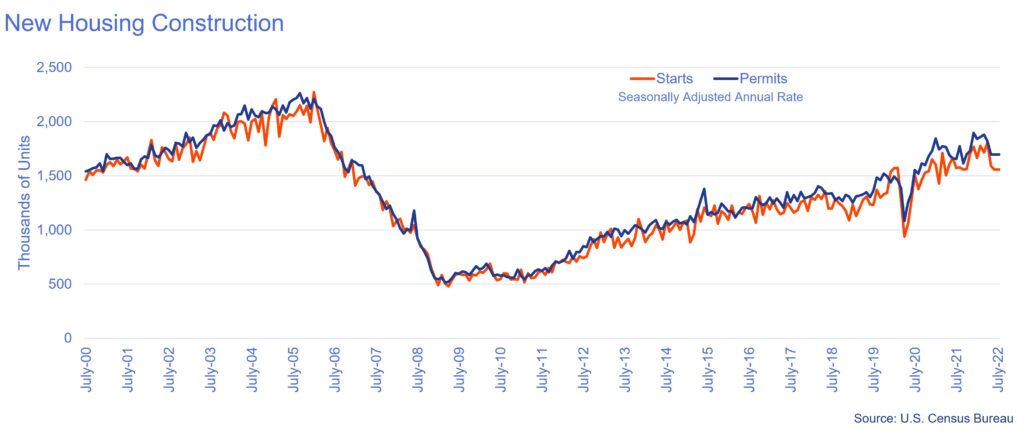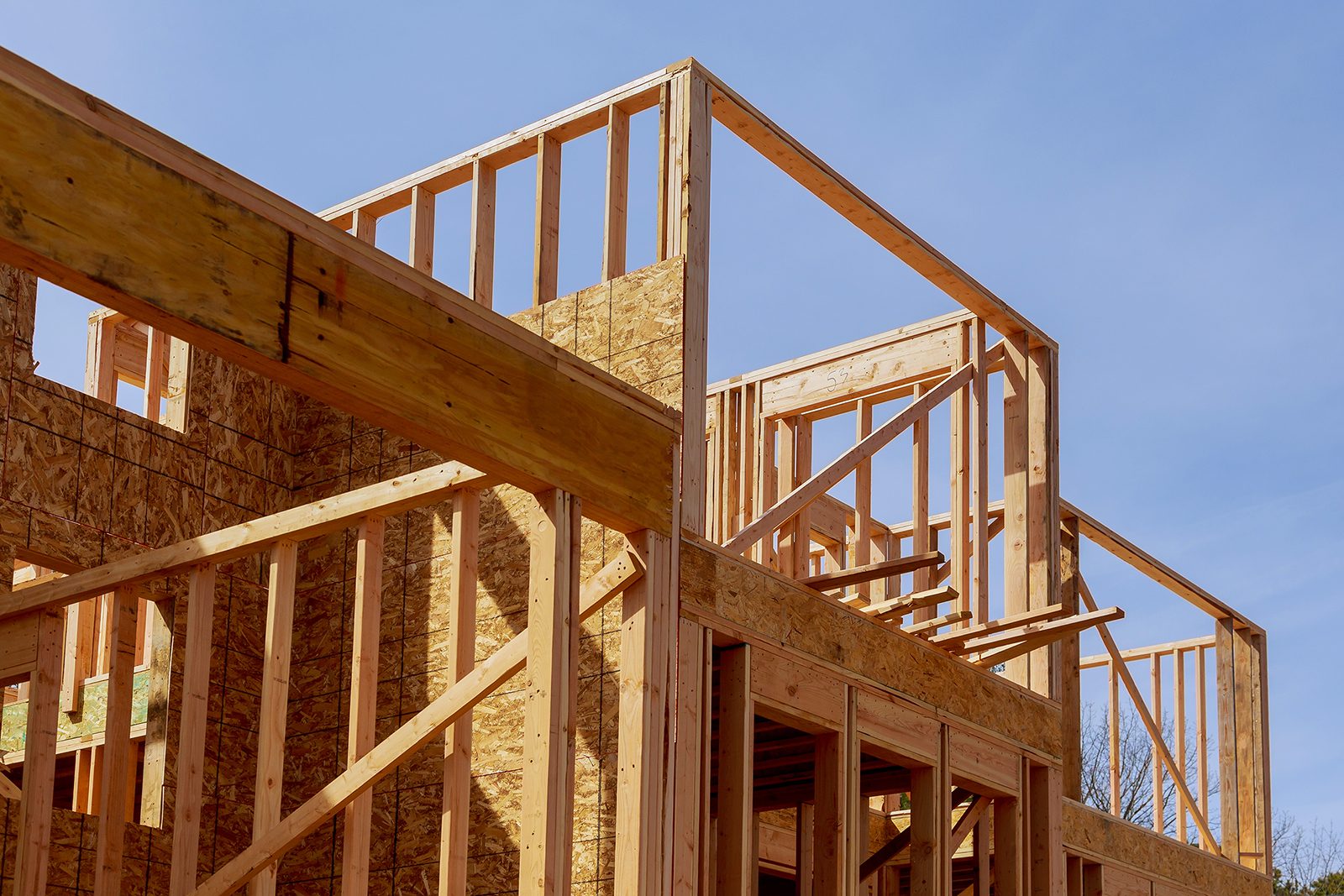The pace of new housing construction has slowed considerably this summer, with builders pulling back on new housing starts in response to ongoing weakening of buyer demand. According to data released by the U.S. Census Bureau, new housing starts were at a seasonally adjusted annual rate of 1,446,000. This is down 9.6% compared to June and is the third month in a row of falling housing starts. The number of new homes authorized by building permit also fell to an annualized rate of 1,696,000, down slightly from last month but up 1.1% compared to last July. However, the number of permits for the construction of single-family homes was down significantly compared to a year ago.

There has been a dramatic turnaround in buyer activity in a relative short time. Just months ago, buyers were falling over one another to bid up prices of new homes as the inventory of existing homes was at historically low levels. Now, in the wake of higher mortgage rates prospective buyers are canceling contracts and taking themselves off of waiting lists for new homes prompting builders to slash home prices.
As demand has cooled, the inventory of existing homes for sale has finally started to expand in many places, offering buyers that remain in the market more choices than they have had over the past two years. In the Mid-Atlantic region, for example, inventory has increased for three consecutive months, rising by more than 20% year-over-year in July.
This slower pace of new housing construction will only add to the already acute housing shortfall in the U.S., which is projected to be in the neighborhood of 3 million homes. With buyer activity expected to remain relatively restrained into the fall and building costs continuing to increase, the long-awaited and desperately needed new construction ramp up likely will not materialize. While builders respond to the short-term slack in demand, the lack of significant new housing construction only worsens the long-term supply-demand imbalance in the housing market.
To stay informed about housing market conditions, be sure to make use of Bright’s housing market reports and get a preview of future buyer activity by tracking the Bright MLS T3 Home Demand Index for the Philadelphia, Baltimore, and Washington DC regions.



